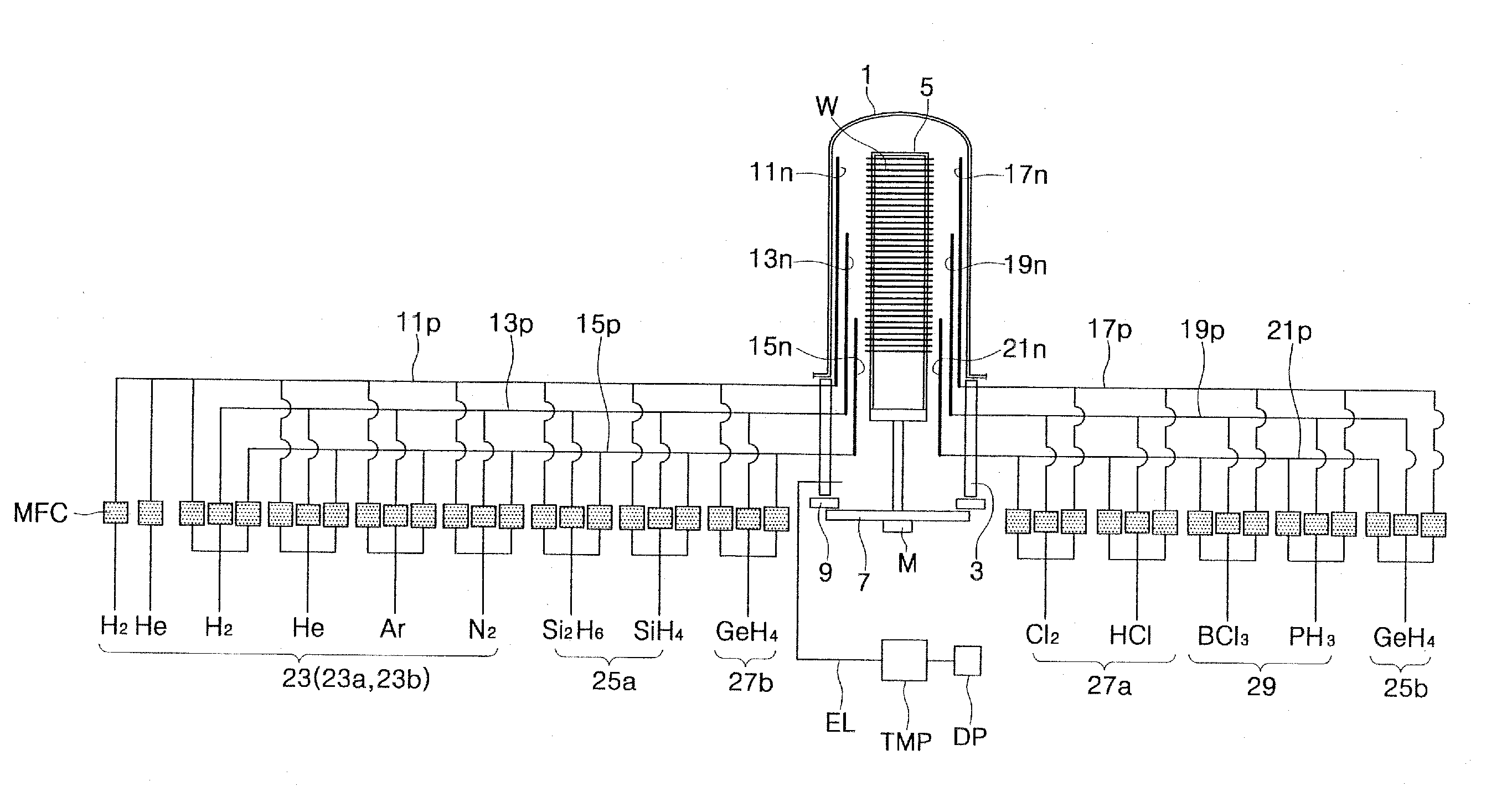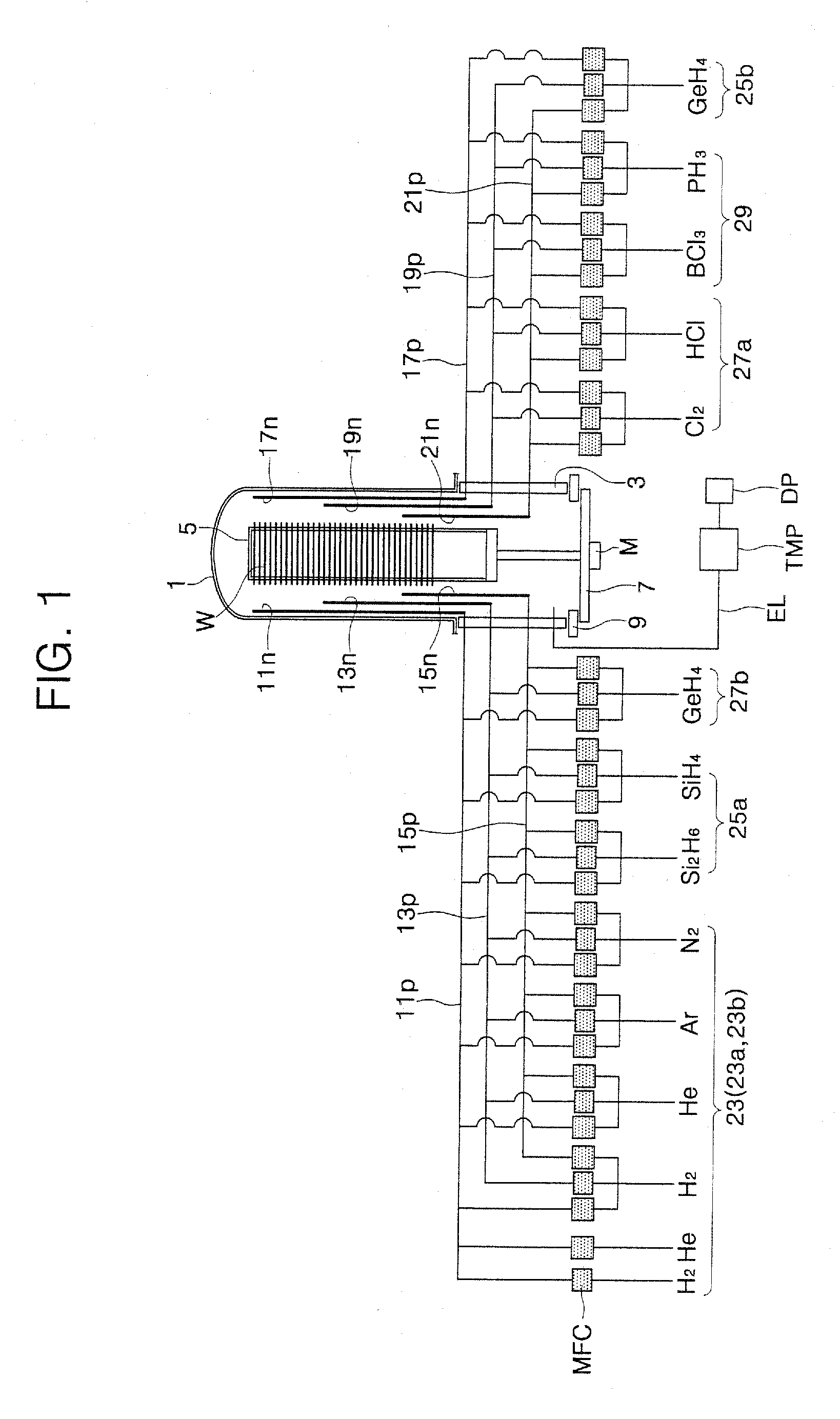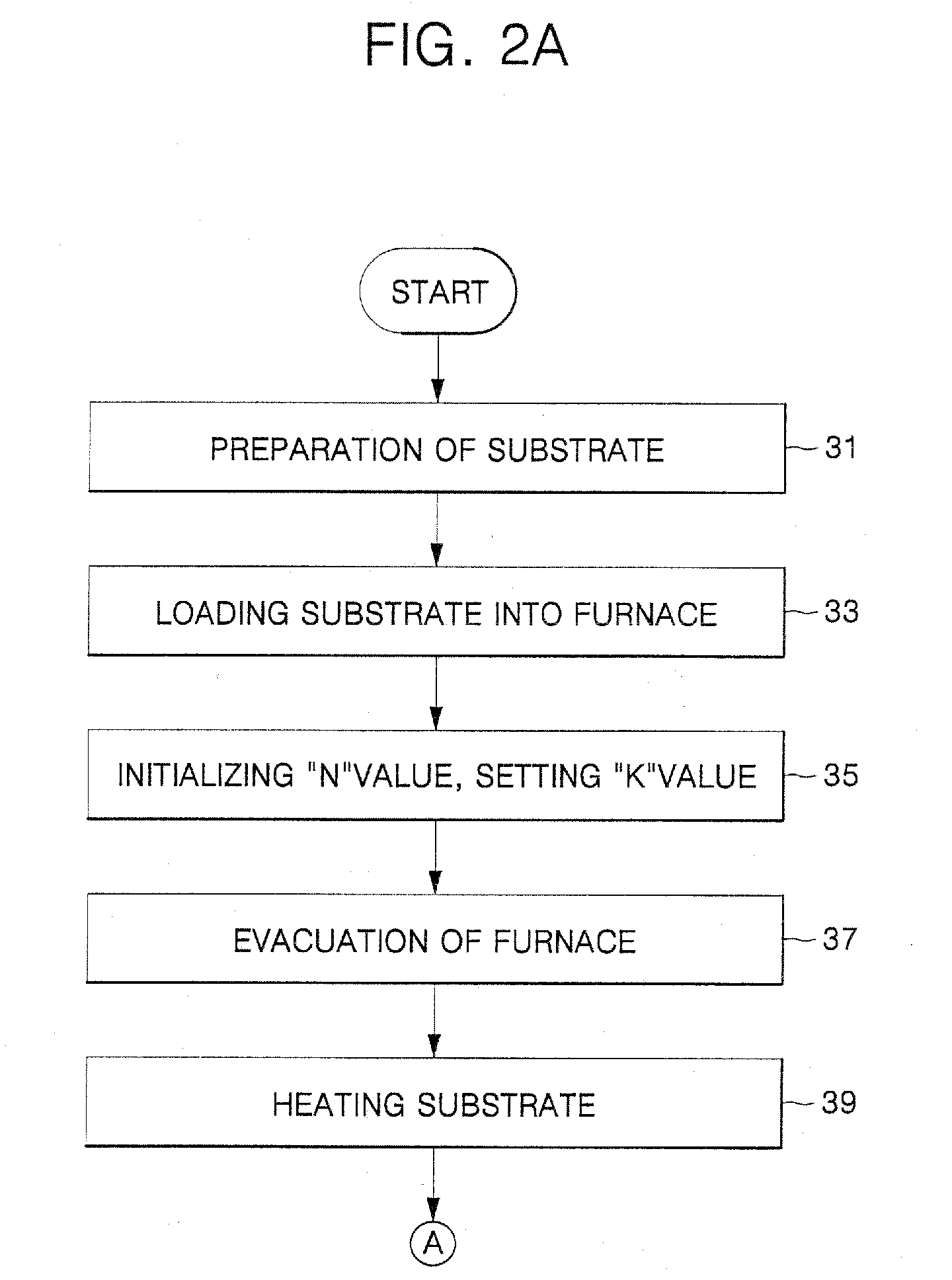Methods of selectively forming an epitaxial semiconductor layer using ultra high vacuum chemical vapor deposition technique and batch-type ultra high vacuum chemical vapor deposition apparatus used therein
a technology of chemical vapor deposition and selective etching, which is applied in the direction of crystal growth process, polycrystalline material growth, chemically reactive gas growth, etc., can solve the problem of difficult suppression of the short channel effect of the mos transistor, the epitaxial growth rate and selective etching rate may be non-uniform, and the epitaxial growth rate and selective etching rate may be low
- Summary
- Abstract
- Description
- Claims
- Application Information
AI Technical Summary
Problems solved by technology
Method used
Image
Examples
examples
[0067]FIG. 5 is a graph showing the relationship between the etch uniformity and the carrier gas of SEG processes in accordance with embodiments of the present invention. In FIG. 5, the abscissa represents split conditions of the carrier gas, the left ordinate represents first etch uniformity UE1 corresponding to wafer etch uniformity, and the right ordinate represents second etch uniformity UE2 corresponding to etch uniformity within the wafer. After repeatedly applying only the selective etching process (step 45 of FIG. 2A) to semiconductor wafers having polysilicon layers for a certain period, the etch uniformities UE1 and UE2 were calculated from variations in the thickness of the polysilicon layers. The selective etching process was performed using main process conditions described in the following table [Table 1]. In the present experiment, a selective etching gas was injected through three gas nozzles as described with reference to FIG. 1.
TABLE 1Process parametersProcess co...
PUM
| Property | Measurement | Unit |
|---|---|---|
| temperature | aaaaa | aaaaa |
| pressure | aaaaa | aaaaa |
| pressure | aaaaa | aaaaa |
Abstract
Description
Claims
Application Information
 Login to View More
Login to View More - R&D
- Intellectual Property
- Life Sciences
- Materials
- Tech Scout
- Unparalleled Data Quality
- Higher Quality Content
- 60% Fewer Hallucinations
Browse by: Latest US Patents, China's latest patents, Technical Efficacy Thesaurus, Application Domain, Technology Topic, Popular Technical Reports.
© 2025 PatSnap. All rights reserved.Legal|Privacy policy|Modern Slavery Act Transparency Statement|Sitemap|About US| Contact US: help@patsnap.com



